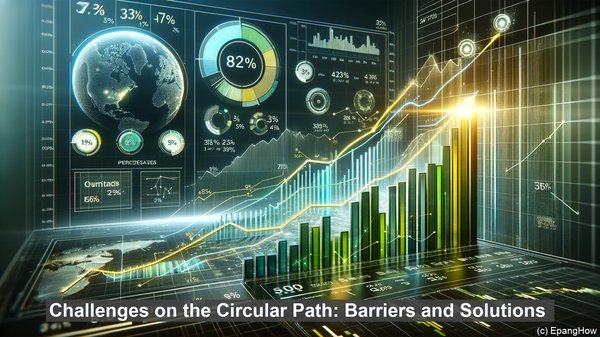Introduction: From Linearity to Circularity
Hello everyone, and welcome to today’s discussion on the circular economy. In a world grappling with environmental challenges, the concept of a circular economy has gained significant traction. But what exactly sets it apart from the traditional linear economy? Let’s find out.
The Linear Economy: A Linear Path to Unsustainability
The linear economy, which has been the dominant model for centuries, follows a ‘take-make-dispose’ approach. Resources are extracted, transformed into products, and after their use, discarded as waste. This model, while efficient in the short term, has severe long-term consequences. It leads to resource depletion, pollution, and a growing waste crisis.
The Circular Economy: A Paradigm of Regeneration
In stark contrast, the circular economy is designed to be regenerative. It aims to keep resources in use for as long as possible, extracting maximum value from them. Instead of a linear flow, it envisions a closed-loop system, where products are reused, repaired, or recycled. This not only reduces waste but also minimizes the need for new resource extraction.

Principles of the Circular Economy: Rethink, Redesign, and Regenerate
The circular economy is built on three core principles. First, ‘rethink’ – it calls for a fundamental reevaluation of our consumption patterns and the way we design products. Second, ‘redesign’ – products should be created with durability, reparability, and recyclability in mind. And finally, ‘regenerate’ – the aim is to restore and replenish natural resources, rather than deplete them.
Benefits of the Circular Economy: Beyond Sustainability
While the environmental advantages of the circular economy are evident, it also offers significant economic benefits. By promoting local production, repair services, and recycling facilities, it generates jobs and fosters innovation. Moreover, it reduces dependence on volatile global resource markets, enhancing economic stability.
Challenges on the Circular Path: Barriers and Solutions
Transitioning to a circular economy is not without its challenges. One major barrier is the existing linear infrastructure, which is ill-suited for circular practices. However, with investments in recycling facilities, reverse logistics, and digital platforms, these hurdles can be overcome. Additionally, policy support and collaboration between stakeholders are crucial for a successful transition.

